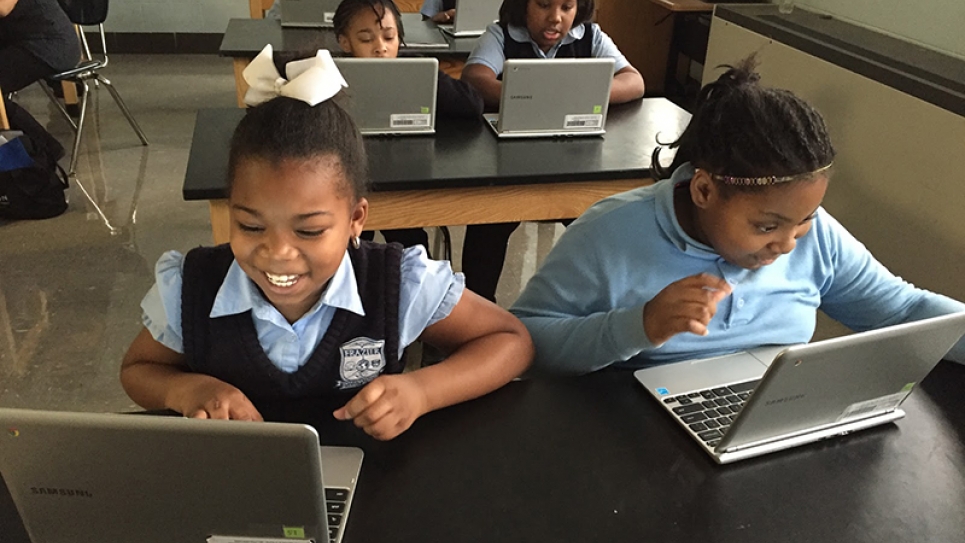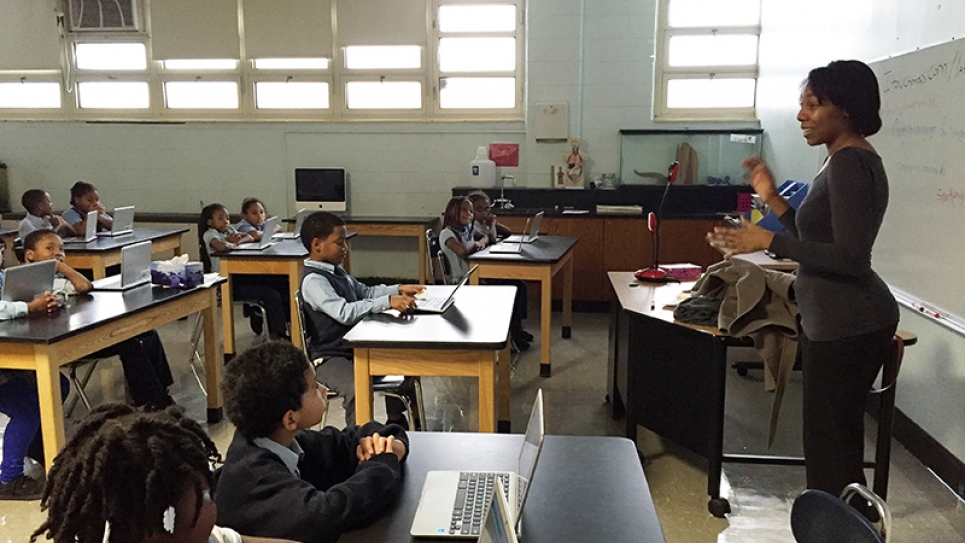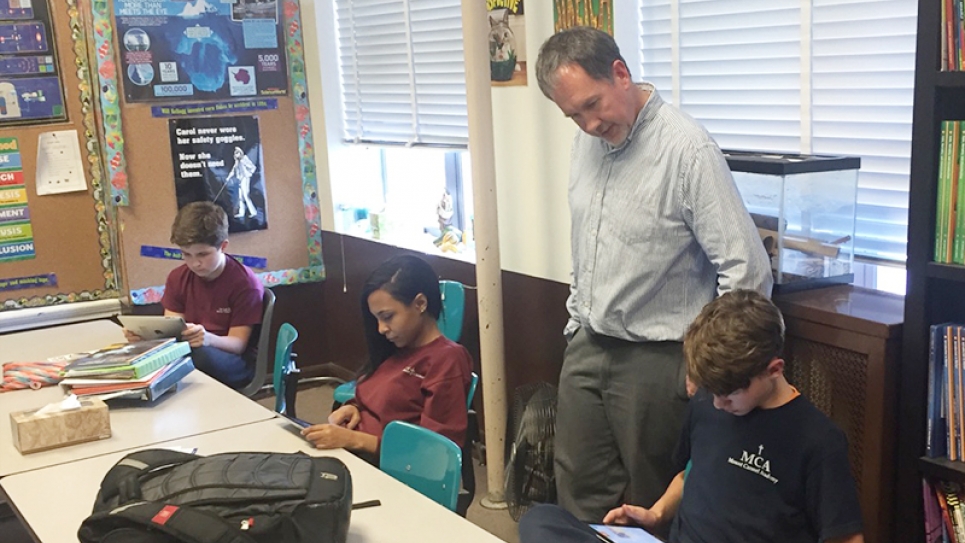
Intro to computer programming, no computer required!
Pairing the volunteers with interested schools was the easy part. School administrators and teachers alike were delighted to have Argonne National Laboratory volunteers visit and help guide their Hour of Code activities last December. In all, Argonne’s Educational Programs department helped place 44 volunteers in Chicago and suburban classrooms to give talks, demos, and lead Hour of Code activities during the 7th Annual Computer Science Education Week (CSEdWeek), December 7-13.
CSEdWeek, established by Congress in 2009 to raise awareness about the need to elevate computer science education at all levels, is observed each year during the week of computer scientist and U.S. Navy Admiral Grace Hopper’s birthday on December 9. The Hour of Code, organized by Code.org as a grassroots celebration of computer science, became the primary activity of CSEdWeek in 2013 and has gone on to become a global phenomenon.
The Hour of Code can take the form of teacher-guided lessons or self-guided tutorials. Using fun exercises available at Code.org, basic programming concepts—loops, conditionals, variables and simple algorithms, for example—can be learned using most any device with a computer chip and a screen. For younger grade levels, or in places where handhelds and PCs are less pervasive, students can use materials such as graph paper, disposable cups, or a deck of cards to learn to convert real-world activities into instructions and even practice debugging malfunctioning code.
Argonne computer scientist Lisa Childers, assigned to spend the day with 8th grade STEM (STEM is an acronym for Science, Technology, Engineering and Math) students at Park Junior High in LaGrange Park, had been thinking for days about how to get students to share her excitement about computer science. Her inspiration came at 3 a.m. as an interactive game where class volunteers were dispatched as “agents” to distribute stickers to their classmates according to an instruction set:
while (findHumanWithoutStickers())
{
giveStickers();
}
returnExtraStickers();
"It was a fun way to demonstrate a few key computer science concepts, and to explain what drew me to the field of computing-- which is my love of creating and improving algorithms," said Childers. "To me, it’s like solving a puzzle."
The Hour of Code has received widespread praise and endorsements from the tech industry and beyond—everyone from technology executive Sheryl Sandberg to President Obama—for promoting the merits of learning computer programming at any age, and for serving as a point to start addressing the knowledge gap that exists between students in the U.S. and their counterparts in other competitive nations.
Other Hour of Code volunteers from Argonne Leadership Computing Facility (ALCF), a DOE Office of Science User Facility, included Director Michael Papka, postdoctoral students Khairi Reda and Sunhwan Jo, software developer Kevin Harms, and user experience and outreach staff David Martin, Jini Ramprakash, and Liza Booker.
"Computational thinking requires you to think in abstractions," said Papka, who spoke to computer science and computer-aided design students at Kaneland High School in Maple Park about modeling and simulation on high performance computers. "When you work on large scientific problems, like we do at the ALCF, the ability to think in abstractions is essential. Not even the massive computing power of Mira can model the real world with all its details."
Ramprakash visited a freshman introduction to computing class at Providence Catholic High School in New Lenox, and took along a node board from Argonne’s previous supercomputer. “Each student had a chance to look at it and hold it,” said Ramprakash. “I wanted them to know that computer science is so much more than just coding software, and that a lot of thought goes into the actual machines behind the software that they use.”
Martin spoke at Our Lady of Mount Carmel Academy in Chicago, where his talk focused on why modeling and simulation matters. Martin also devised an "unplugged" interactive exercise to demonstrate how large computers use parallelism to work on a problem more efficiently.
Liza Booker spent all day with students ranging from kindergarten to 6th grade at Frazier International Magnet School in Chicago, talking about Argonne, the ALCF, her responsibilities as a user experience analyst, and STEM.
"I learned quickly that I had to tailor my presentation to each class," said Booker. "The upper grades were interested in what a scientist does and whether they could visit the laboratory. The kindergarteners were interested in outer space and other specific research that was done at the laboratory."
Booker said she hopes to volunteer for Hour of Code again next year.
Argonne National Laboratory seeks solutions to pressing national problems in science and technology. The nation's first national laboratory, Argonne conducts leading-edge basic and applied scientific research in virtually every scientific discipline. Argonne researchers work closely with researchers from hundreds of companies, universities, and federal, state and municipal agencies to help them solve their specific problems, advance America's scientific leadership and prepare the nation for a better future. With employees from more than 60 nations, Argonne is managed by UChicago Argonne, LLC for the U.S. Department of Energy's Office of Science.
The U.S. Department of Energy's Office of Science is the single largest supporter of basic research in the physical sciences in the United States and is working to address some of the most pressing challenges of our time. For more information, visit the Office of Science website

